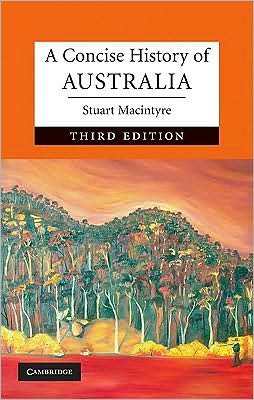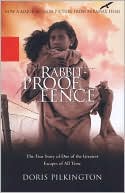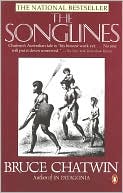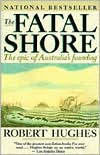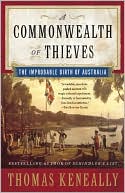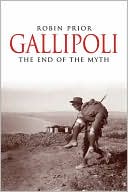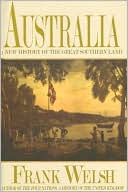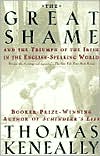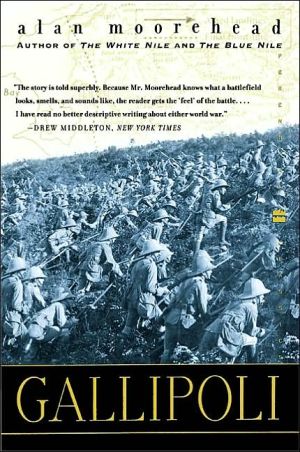A Concise History of Australia
Australia is the last continent to be settled by Europeans, but it also sustains a people and a culture tens of thousands years old. For much of the past 200 years the newcomers have sought to replace the old with the new. This book tells how they imposed themselves on the land, and brought technology, institutions and ideas to make it their own. It relates the advance from penal colony to a prosperous free nation and illustrates how, as a nation created by waves of newcomers, the search for...
Search in google:
This insightful and eloquent book is the most up-to-date single-volume Australian history available.
\ Cambridge University Press\ 0521841224 - A Concise History of Australia - by Stuart Macintyre\ Excerpt\ \ \ \ \ 1\ Beginnings\ \ \ \ How and when did Australia begin? One version of the country's origins - a version taught to generations of schoolchildren and set down in literature and art, memorials and anniversaries - would have it that Australian history commenced at the end of the eighteenth century. After several centuries of European voyaging in the southern oceans, the English naval lieutenant James Cook sailed the eastern coast in 1770, named it New South Wales and claimed possession in the name of his monarch. Within twenty years the British government dispatched an expedition to settle New South Wales. On 26 January 1788 its commander, Arthur Phillip, assumed government over the eastern half the country. The thousand officers, troops, civilian officials and convicted felons who came ashore from the eleven vessels of the First Fleet anchored in Sydney Harbour prepared the way for later immigrants, bond and free, who spread out over the continent, explored and settled, possessed and subdued it.\ This is a story of a sleeping land brought to life by Endeavour, the name given to Cook's sturdy ship and the quality attributed to those who followed him. The chroniclers of the First Fleet recorded how a landing party unloaded the stores, cleared a space on the wooded slopes of Sydney Cove and erected their first habitations. They were describing the advent of civilisation. The sound of an axe on wood, English steel on antipodean eucalypt, broke the silence of a primeval wilderness.\ The newcomers brought with them livestock, plants and tools. They also brought a mental toolkit fashioned from the objective rationality of the Enlightenment and a corresponding belief in human capacity, the moral certainty and stern duty of evangelical Christianity, and the acquisitive itch of the market. Those ways of thinking and acting made possible the establishment of European dominion over the rest of the world. That accomplishment in turn shaped the understanding of economics, resources, navigation, trade, botany, zoology, anthropology - and history.\ History served the new drive to control and order the natural world, to understand and even direct events. A new awareness of geography and chronology, of space and time as objectively fixed and measurable, encouraged an understanding of history as a branch of knowledge independent of the standpoint of the observer, while at the same time it disclosed an insistent process of improvement and progress that legitimated the replacement of the old by the new. Seen thus, the history of Australia formed a late chapter in British, European and world history.\ This version of Australia's beginning emphasised its strangeness. The plants and animals, even the human inhabitants, confounded existing taxonomies; they were both old and new. The monotremes and marsupials, warm-blooded animals that reproduced by egg or carried their offspring in a pouch, seemed to be primitive forerunners of the placental mammal, and at the same time a bizarre inversion of nature. Hence the puzzlement of the early New South Wales judge and rhymester, Barron Field:\ Kangaroo, Kangaroo!\ Thou Spirit of Australia!\ That redeems from utter failure,\ From perfect desolation,\ And warrants the creation\ Of this fifth part of the Earth\ Which would seem an after-birth . . .\ In this version of Australian history, the novelty of the place - it was New Holland before it became New South Wales - was softened by attaching its destiny to imperial origins. Colonial history took British and European achievement as its point of departure. Behind the rude improvisation on the furthest frontier of settlement of the British Empire was the inheritance of institutions, customs and expectations. A naval officer who in 1803 watched a team of convicts yoked to a cart that was sunk up to its axles in the unpromising sand hills of a southern bay comforted himself with the vision of 'a second Rome, rising from a coalition of Banditti . . . superlative in arms and arts'.\ This settlement was abandoned, and the officer returned eventually to England, but others stayed and reworked his anticipation. These subsequent visionaries thought of Australia not as mere imitation but as striking out anew. They believed that the vast island-continent offered the chance to leave behind the Old World evils of poverty and class privilege. With the transition in the middle of the nineteenth century from penal settlements to free and self-governing communities, the emphasis shifted from colonial imitation to national experimentation. With the gold rush, land settlement and urban growth, minds turned from dependency to self-sufficiency, and from a history that worked out the imperial legacy to one of self-discovery.\ During the nineteenth century and well into the twentieth, the sentiment of colonial nationalism served the desire to mark Australia off from Britain and Europe. Then, as the last imperial ties were severed, even that way of distinguishing the child from the parent lost meaning. In its place arose the idea of Australia as a destination for all-comers from every part of the world, which served the multicultural attitudes that formed in the closing decades of the twentieth century and further undermined the foundational significance of 1788.\ The blurring of origins turned Australian history into a story of journeys and arrivals, shared by all and continuing right up to the present. But such smudging was too convenient. It failed to satisfy the need for emotional attachment and it left unappeased the pricking of conscience. The desire for a binding national past that would connect the people to the land was frustrated by the feeling of rootlessness, of novelty without depth. The longing for belonging to an indigenous culture was denied by the original usurpation. A history of colonisation yielded to a realisation of invasion.\ By the end of the twentieth century it was no longer possible to maintain the fiction of Australia as terra nullius, a land that until its settlement in 1788 lacked human habitation, law, government or history. An alternative beginning was apparent. Australia - or, rather, the earlier landmass of Sahul, a larger island continent that extended northwards into Papua New Guinea and embraced the present island of Tasmania - was the site of an earlier way of life that had evolved over many millennia. The growing recognition of this vastly extended Australian history spoke to late-twentieth-century sensibility. It revealed social organisation, ecological practices, languages, art forms and spiritual beliefs of great antiquity and richness. By embracing the Aboriginal past, non-Aboriginal Australians attached themselves to their country.\ They did so, however, not simply out of a desire for reconciliation and harmony but because they were challenged by the Aboriginal presence. The rediscovery of this longer history occurred alongside the revival of indigenous organisation and culture, the one process feeding into the other and yet each possessing its own dynamic. For the Aboriginal and Torres Strait Islander peoples, the European invasion was a traumatic event with lasting consequences for their mode of life, health, welfare and very identity. But theirs was also a story of survival - the survival of their customs and practices and of the stories and songs through which they were maintained. While the sharing of their culture drew attention to their survival and entitlements, they were reluctant to surrender control of it.\ For non-Aboriginal scholars, even the most sympathetic, it thus became necessary to find new terms on which their studies could be conducted. Anthropologists were no longer able to assume they could take up residence among a local community, observe its ways, record its testimony and speak on its behalf. Archaeologists could not excavate sites without regard to Aboriginal sensitivities, and museums had to give up collections of artefacts and human remains. Even as researchers pushed back the earliest known date of the Aboriginal presence in Australia, they were forced to accommodate these constraints. The second version of Australian history, the one that begins not at 1788 CE but at least 50,000 and possibly 60,000 or more years before the present, is at once more controversial, more rapidly changing and more compelling.\ It is controversial not simply because of issues of cultural ownership but because of the intellectual and emotional challenges it poses. Even if it is permissible to appropriate other cultures, is it possible to comprehend them? The older history noticed Aborigines only as a tragic and disturbing presence, victims of the iron law of progress. The Latin term Ab origines means, literally, those who were here from the beginning: its persistence, despite attempts to find other, more specific designations such as are used for aboriginal peoples in other parts of the world, attests to their abiding presence.\ The remnants of this Aboriginal way of life were therefore pieced together and fitted into the jigsaw puzzle of prehistory to disclose a hierarchy of peoples at different stages of complexity, sophistication and capacity. Aboriginal traditions were of interest for the light they shed on this prehistory for, in the absence of written records, chronology and effective political authority, the Aboriginals were deemed to lack a history of their own. Denied agency in the events that began in 1788, they were no more than objects of history.\ It is precisely that idea of history that is now cast into doubt by the new understanding of the Australian past. In 1992 the country's highest court found that the application of the doctrine of terra nullius when the British government claimed sovereignty 'depended on a discriminatory denigration of indigenous inhabitants'. Speaking six months later before an Aboriginal audience, the prime minister went further. 'We took the traditional lands and smashed the original way of life', Paul Keating stated. 'We brought the diseases. The alcohol. We committed the murders. We took the children from their mothers. We practised discrimination and exclusion.'\ Keating cited these past wrongs in a spirit of reconciliation, insisting 'there is nothing to fear or lose in the recognition of historical truth'. Yet in the past few years every one of his statements has been contested. His successor, John Howard, dismissed the recommendations of the Reconciliation Council. Howard's government rejected the findings of an official inquiry into the Stolen Generations of Aboriginal children taken from their parents, and restricted the operation of native title. Others have insisted that the original inhabitants of this country were a primitive people incapable of serious resistance and that the British settlement of Australia 'was the\ MAP 1.2 Sunda and Sahul\ least violent of all Europe's encounters with the New World'. The question of national origins has never been so fiercely contested.\ The island-continent of Australia, so the scientists tell us, formed as the great supercontinent of Pangea broke up in the remote past. First Laurasia in the north separated from Gondwana in the south. Then what would become India, Africa, South America and New Zealand broke free from Gondwana and drifted north, and later still - perhaps 50 million years ago - Australia and New Guinea did the same, until finally they stopped short of the island-chain that extends from Indochina down to Timor. Although the oceans rose and fell with periods of warmth and cold, this vast land-raft was always surrounded by water. The deep channel that today separates South-East Asia from the north-west coast of Australia narrowed at times to as little as 100 kilometres but it never closed. The sea always separated Sahul, the continental shelf that encompassed Australia, Tasmania and New Guinea, from Sunda, the archipelago that took in Malaya, Sumatra, Borneo and Java. The separation came to be known as the Wallace Line, after the nineteenth-century scientist who showed that it was a permanent zoological divide that demarcated the Eurasian species from those of Australia and New Guinea.\ Australia was thus isolated. It was also remarkably geologically stable. There was little of the buckling and folding of the earth's crust that elsewhere produced high mountain ranges or deep rifts. Together with the relative absence of glaciation and the infrequency of volcanic activity, this left an older, flatter landmass, rich in mineral deposits but shallow in soil covering. Weathering and erosion leached the soil of nutrients. The remarkable diversity of plants and animals that evolved and flourished in this environment had to adapt to major climatic changes. Rainforests expanded and contracted, inland lakes filled and emptied, carnivores were less durable than herbivores.\ When the last ice age ended some 10,000 years ago, and the present shoreline formed, Australia extended 3700 kilometres from the northern tropics to the southern latitudes, and 4400 kilometres from east to west. Much was arid plain, and much of the rain that fell on the line of mountains running down the eastern seaboard flowed into the Pacific Ocean. More than any other landmass, this one was marked by the infrequency and unreliability of rain. Scientists have recently identified the El Niño Oscillation Index to measure a climatic phenomenon that occurs when the trade winds that blow from the east across the Pacific Ocean fail. With that failure, warm water accumulates off the South American coast and brings fierce storms to the Americas; conversely, the colder water on this side of the Pacific reduces evaporation and cloud formation, and thus causes prolonged drought in eastern Australia. The El Niño cycle lasts from two to eight years, and climatologists can detect it in records going back to the early nineteenth century. It is probable that it has operated for much longer, and shaped the evolution of the Australian environment.\ The natural historians who marvel at the rich diversity of this singular environment find in it an ingenious anthropomorphism. The plants best suited to such circumstances sent down deep roots to search for moisture, used narrow leaves and tough bark to minimise evaporation and loss of vital fluid, and scattered seeds capable of regeneration after lying for long periods on the dry earth. They were frugal in their eking out of nutrients and prodigal in their reproduction. Some of them, such as the stands of eucalypts that spread a blue haze under the hot sun, actively enlisted the assistance of the conditions by strewing the ground with incendiary material to burn off competitors and stimulate their own regeneration. In the pyrohistory of Australia, the vast and sleeping continent is reconfigured as an arena in which the gum trees triumphed by kindling a fiery vortex.\ Such fires would have been ignited periodically by lightning strikes or other natural causes, but by this time there was another incendiary agent - humans. The acquisition of control over fire by Homo sapiens provided protection, heat, light and power: the domestic hearth became site and symbol of human society. It might well have been the sight of columns of smoke rising on the north-west shore of Sahul that attracted people on island extremities of Sunda to cross the intervening sea. We do not know when this passage occurred, why or even how. It was probably achieved by bamboo rafts, as the result of population pressure and at a time when the Timor Sea was low. The most recent low-point, 100 metres below present sea level, occurred about 18,000 years ago; but the evidence of occupation before then is clear. The same low-point occurred about 140,000 years ago, probably too early. In between these two approximate dates, the sea receded to some 60 metres less than today about 70,000 years ago and did not regain its present level until the last ice age ended in the last 10,000 years.\ The archaeological evidence for human presence in Australia remains frustratingly close to the limits of reliable dating. Arrival more than 40,000 years ago is now generally accepted; there are strong arguments for 60,000 years, and a still longer presence cannot be ruled out. Furthermore, a mounting body of evidence suggests a rapid occupation of Australia, with human habitation extending from the lush tropics of the north to the icy rigours of the south, the rich coastal waterlands and the harsh interior. Whenever the first footprint fell on Australian soil, it marked a new achievement by Homo sapiens - maritime migration out of the African-European-Asian landmass into a new land.\ The truth is, of course, that my own people, the Riratjungi, are descended from the great Djankawa who came from the island of Baralku, far across the sea. Our spirits return to Baralku when we die. Djankawa came in his canoe with his two sisters, following the morning star which guided them to the shores of Yelangbara on the eastern coast of Arnhem Land. They walked far across the country following the rain clouds. When they wanted water they plunged their digging stick into the ground and fresh water followed. From them we learnt the names of all the creatures on the land and they taught us all our Law.\ The Djankawa story told by Wandjuk Marika is only one of many Aboriginal stories. Others tell of different origins, of ancestors coming from the land or from the sky, and of the mutability of humans with other life forms. This story is of origins that begin with a journey, of the signs that led the ancestors to their destination, and of the bounty of the land that sustained them.\ Such creation stories are to be found for other peoples, as with the books of Genesis and Exodus in the Old Testament, but they bear lightly on the consciousness of those who still read them. Ancestral events, as recorded in stories, songs and rituals, have a particular significance in Aboriginal lives, for they express a particularly close relationship to the land. The events that occurred during the Dreamtime or the Dreaming - both English terms are used as inexact translations of that used by the Arrernte people of central Australia, altyerre - created the hills and creeks, plants and animals, and imprinted their spirit on the place.\ The preservation and practice of this knowledge thus affirms the custodianship of the land. Here is how a Northern Territory man, Paddy Japaljarri Stewart, explains its importance:\ My father's grandfather taught me the first, and after a while my father taught me the same way as his father told jukurrpa [Dreaming], and then my father is telling the same story about what his father told him, and now he's teaching me how to live on the same kind of jukurrpa and follow the way what my grandfather did, and then teach what my father did, and then I'm going to teach my grandchildren the same way as my father taught me.\ When my father was alive this is what he taught me. He had taught me traditional ways like traditional designs in body or head of kangaroo Dreaming (that's what we call marlu Dreaming) and eagle Dreaming. He taught me how to sing song for the big ceremonies. People who are related to us in a close family, they have to have the same sort of jukurrpa Dreaming, and to sing songs in the same way as we do our actions like dancing, and paintings on our body or shields or things, and this is what my father taught me. My Dreaming is the kangaroo Dreaming, the eagle Dreaming and budgerigar Dreaming, so I have three kinds of Dreaming in my jukurrpa and I have to hang onto it. This is what my father taught me, and this is what I have to teach my sons, and my son has to teach his sons the same way as my father taught me, and that's way it will go on from grandparents to sons, and follow that jukurrpa. No-one knows when it will end.\ Paddy Japaljarri Stewart recorded this testimony, by tape-recorder, in his own language in 1991. He evokes the continuity of Dreaming from grandfather and father to son and grandson, down the generations and across the passage of time; yet the insistence on the obligation to preserve and transmit his three jukurrpas attests to the corrosive possibilities of secular change. He goes on to aver that the maintenance of the Dreaming has to be 'really strict', so that his family will not 'lose it like a paper, or throw it away or give it away to other families'. The overlay of new technology on customary knowledge heightens the contrast between a binding tradition and a fragile, disposable past. The history that is recorded on paper, like other documents such as land titles, can be lost or surrendered to others. The history that is lived and renewed within the ties of the family remains your own.\ The Aboriginal people who occupied Sahul encountered radically different conditions from those they left in Sunda. The absence of predators, for there were few carnivorous competitors here, gave them an enormous initial advantage. They spread over an extraordinary range of ecologies - tropical northern forests, Tasmanian glaciated highlands, the dry interior - and had to adjust to major climatic changes. Over hundreds of generations they adapted to these different, changing environments, and in turn they learned how to manipulate them to augment the food supply. As hunter-gatherers, they lived off the land with a precise and intimate knowledge of its resources and seasonal patterns. They organised socially in extended families, with specific rights and specific responsibilities for specific country, and rules to regulate their interaction with others.\ \ \ \ \ © Cambridge University Press
1Beginnings12Newcomers, c. 1600-1792163Coercion, 1793-1821344Emancipation, 1822-1850525In thrall to progress, 1851-1888856National reconstruction, 1889-19131217Sacrifice, 1914-19451568Golden age, 1946-19741999Reinventing Australia, 1975-200424210What next?291
